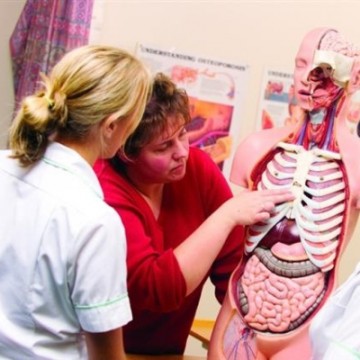As Nursing Crisis Looms, Ore. Schools Turn Away 2,071 Nursing Applicants
Wednesday, October 08, 2014

Photo credit: University of Salford Press Office on Flickr
Joanne Warner, dean of the University of Portland School of Nursing, said the future of nursing depends on new nursing graduates, especially as health care takes a turn towards prevention and education for patients.
“It is a transformative, reforming time in health care,” Warner said. “Nursing is the answer for the future.
"We need to focus on how to be educationally prepared and inventive for the future.”
However, the data gathered by the AACN predicts the need for healthcare services will exceed the number of available Registered Nurses (RNs) and Advanced Practice Registered Nurses (APRNs) in the future.
Oregon is already starting to see the effect of a nurse shortage. In Oregon, 906,954 people live in areas with a shortage of health professionals, geographic or demographic groups that the U.S. Department of Health and Services have determined have too few primary care providers, high infant mortality, high poverty or a high elderly population compared to health care providers.
In those areas, 56.31 percent of residents experience a shortage of health care providers that interferes with their care, according to AACN research.
Employment predictions for Oregon foresee a larger need for health professionals. The State of Oregon Department of Employment predicts a 22 percent increase in health care and social assistance jobs, with 45,000 new jobs available by 2022. That would make health care the profession with the third-highest increase in job possibilities.
National employment predictions are headed in the same direction. The National Bureau of Labor predicts there will be 1.1 million open RN and APRN job positions by 2022. The change is attributable to retiring nurses and baby boomers requiring increased health care as they grow older.
“If you look at the demographics of our community, baby boomers are retiring and we are living longer,” said Bobi Swan, vice president of enrollment at Concordia University, one of Oregon’s five AACN schools.
AACN schools produce Registered Nurses, Nurse Practitioners, Certified Nurse-Midwives, Certified Registered Nurse Anesthetists and Clinical Nurse Specialists, yet a drop in funding over recent years has limited their budgets for classrooms and professors. This limits the number of student nurses they can enroll.
Contributions to nursing programs from Oregon Title VIII and the National Institute of Nursing Research (NINR) have dropped as much as $2 million in the last 10 years. In 2003 Oregon received $2,389,387 from NINR funding, but in 2013 received only $397,838.
“Key points in nursing programs are to hire the best nursing facility and have the best lab space available. It’s critical,” Swan said.
Warner agreed that having sufficient and quality clinical space and professors is something every nursing school needs to make a priority. Producing more baccalaureate and graduate nurses will have a great impact on the future and be a step in the right direction for the future of health care, she said.
Related Articles
- Number of Oregonians Without Health Insurance Falls by 63 Percent
- Oregon Health & Science University Arms Campus Cops
- Oregon Offers Student Loan Repayments to Doctors




 Delivered Free Every
Delivered Free Every
Follow us on Pinterest Google + Facebook Twitter See It Read It